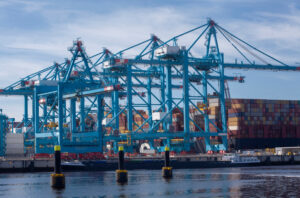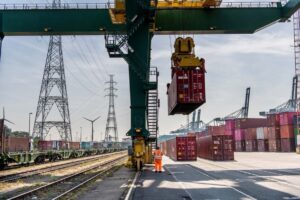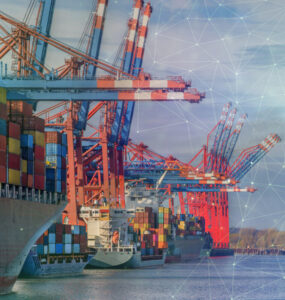We have seen a wave of innovative carbon-reducing initiatives from ports and supply chain stakeholders in a bid for maritime to hit international net-zero goals.
But optimisation of a port’s operations – through reduction of machine idle time, automatic switch-off, and remote-controlled equipment management – may be the key to becoming a truly green port.
This was the view of John Matthiesen, Smart Grid & Asset Management Team Lead, HATCH, from Day 3’s Reducing Energy Costs & Dependence in your Port seminar of Smart Digital Ports of Future 2021.
On discussing how a port can accommodate digital technologies to reduce carbon output, Matthiesen was passionate about first measuring a port’s emissions through sensors and air quality gauges, for example, and visualising that data to find areas of improvement.
“Be able to measure where you are today. It’s a critical baseline,” Matthiesen said.
Matthiesen continued that once measuring a port’s output, it can then optimise its yard equipment. “The cheapest KwH is the one you don’t have to use,” he said.
By first measuring the total time a straddle carrier is in use, for example, a port can implement smart systems, automation, and remote control of equipment to achieve optimised equipment levels and vehicle management, fewer fleet hours, and pooled equipment management.
Matthiesen’s sentiment was echoed by Torsten Neubert, IT & Operations Director at HHLA. Neubert outlined the benefits of Digital Twin technologies in being able to measure, map, and then make actionable decisions on reducing carbon emissions in ports.
“The port and its sensors and measures are a tool of how to manage your electrical grid and your assets for energy consumption,” he told the audience.
“In this respect, the digitalisation of assets helps a lot to get energy management under control. It is simply the technical tool to apply that technology.”
Neubert continued that from being able to collect those crucial datasets on emissions during idle time of a Heavy Goods Vehicle (HGV) accessing a port, for example, a port can build its strategy on reducing turnaround time, or allowing the HGV to connect to electrical power – all of which reduces carbon emissions for the port and its community.
“The message is clear that ports should start to deal with energy management and digital twins: start measuring, and start controlling your grid,” he said.









